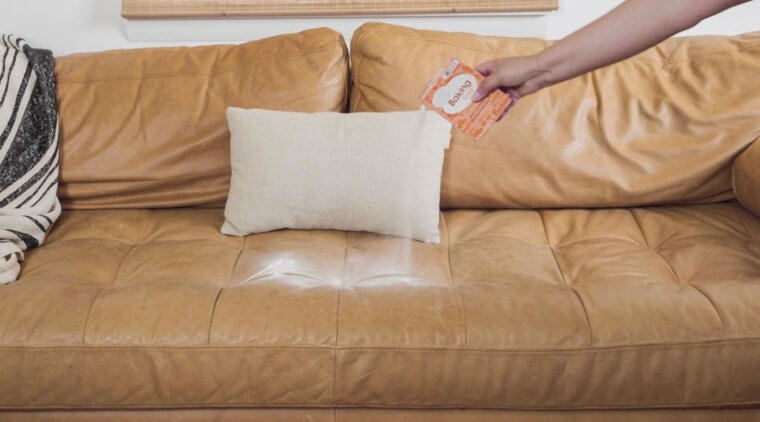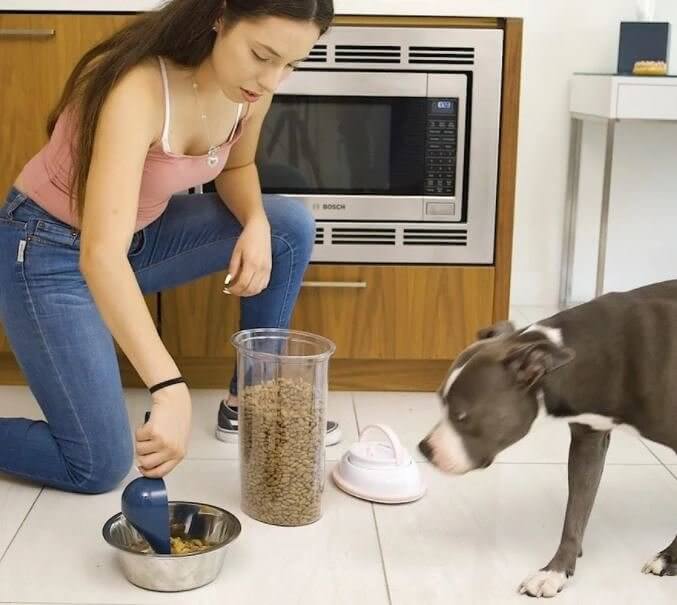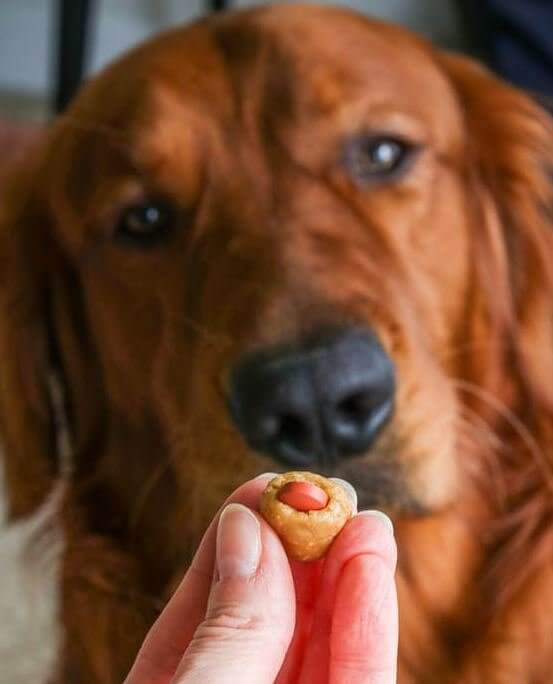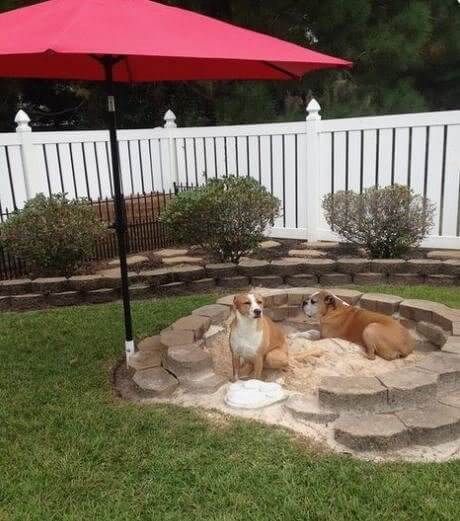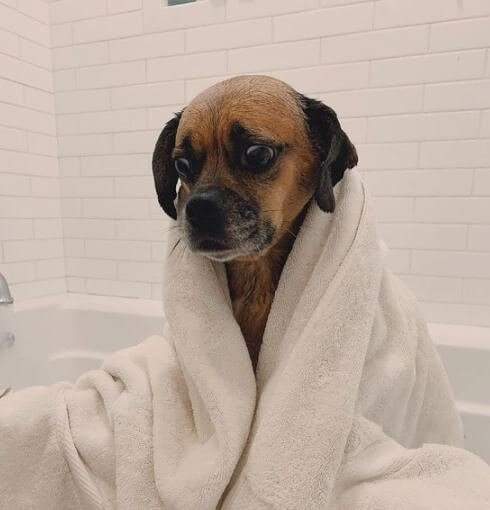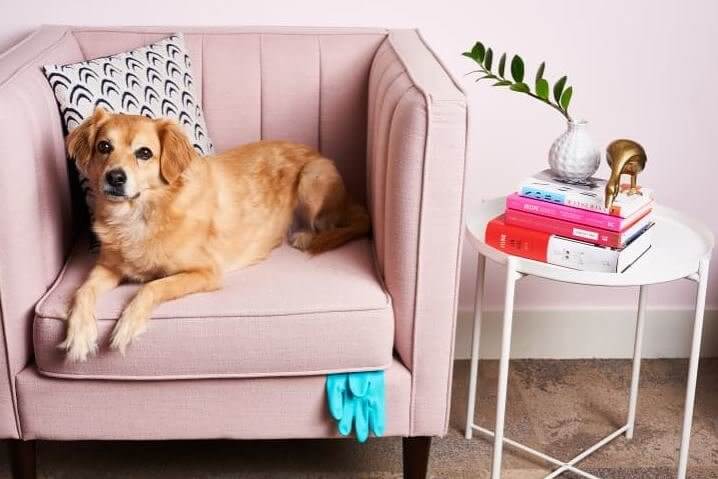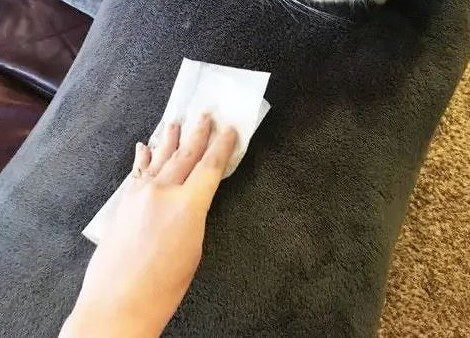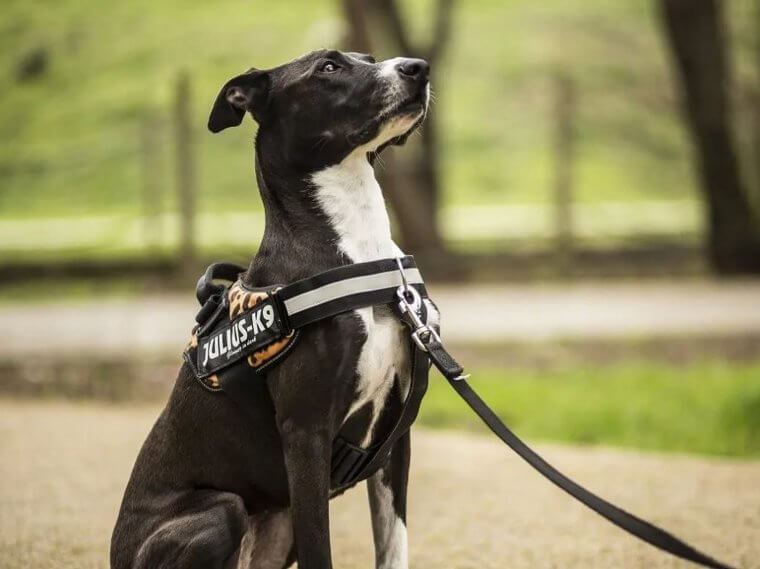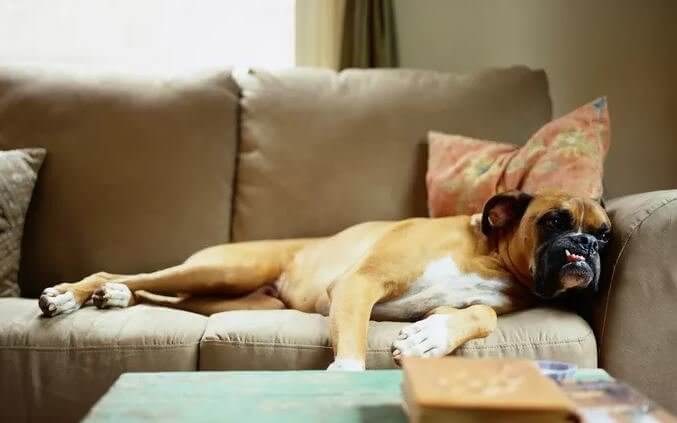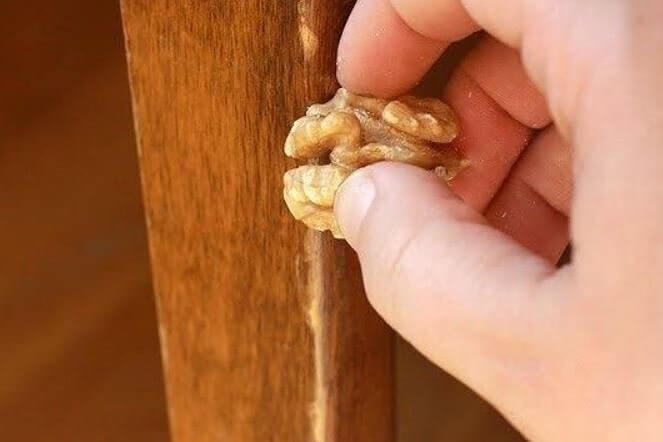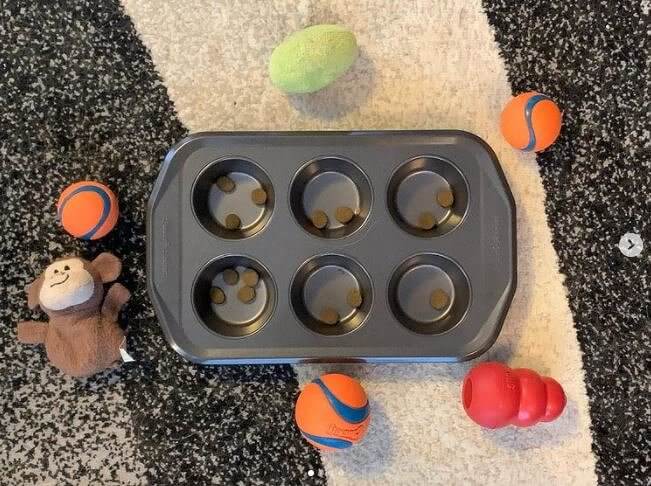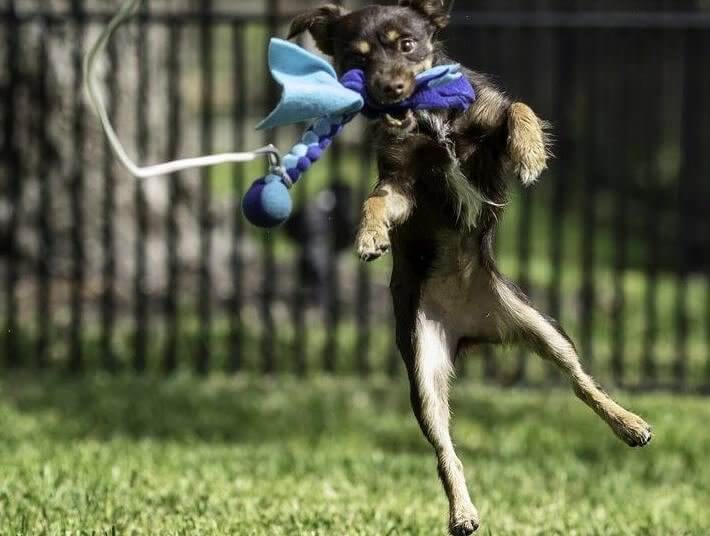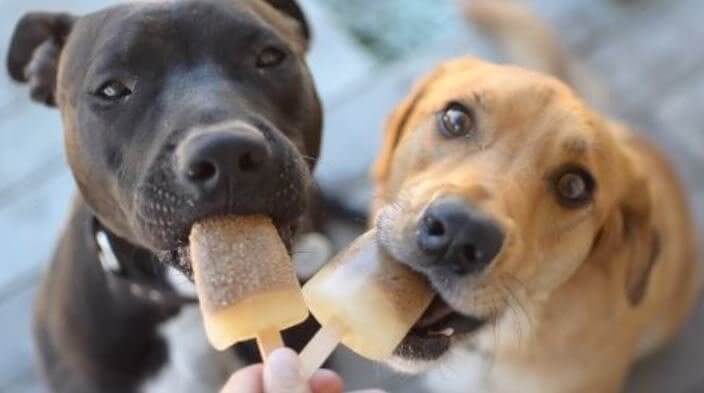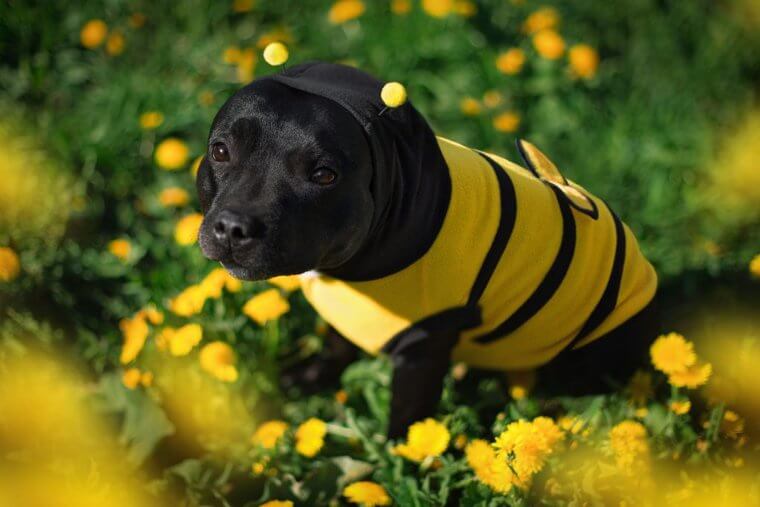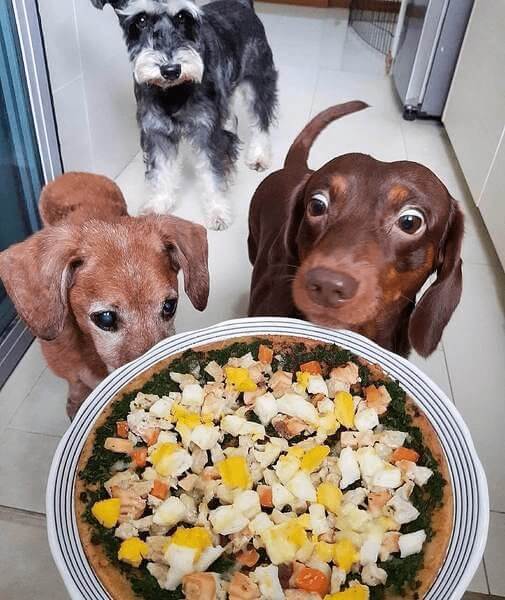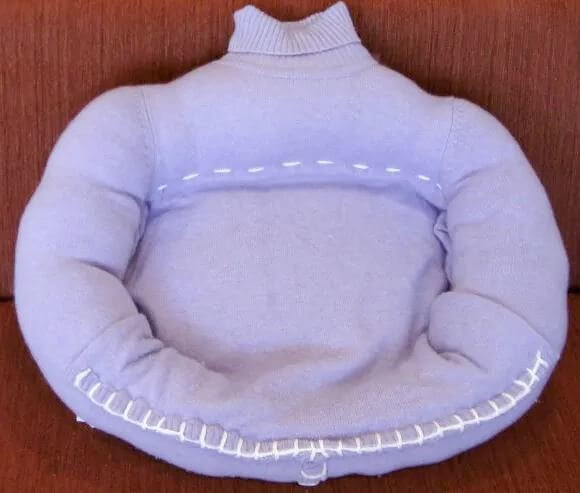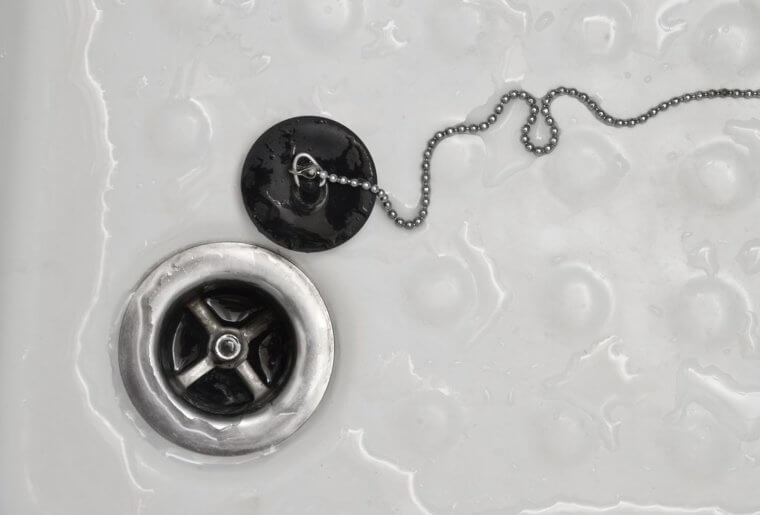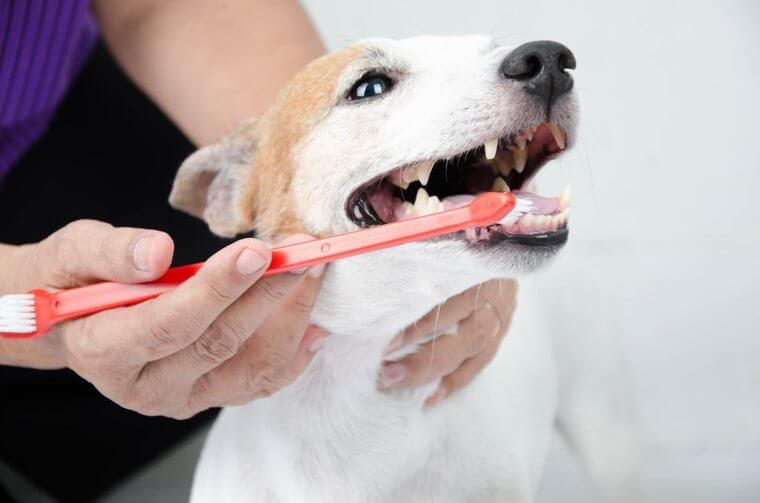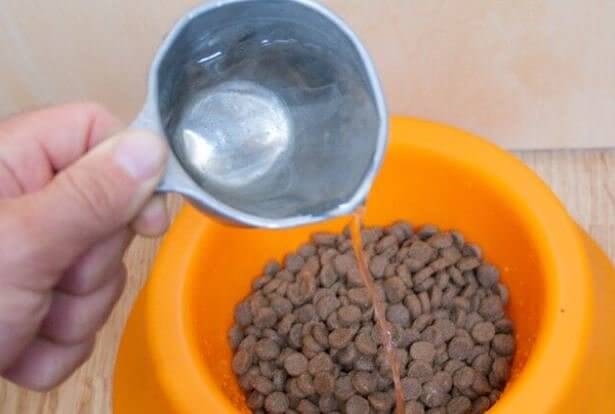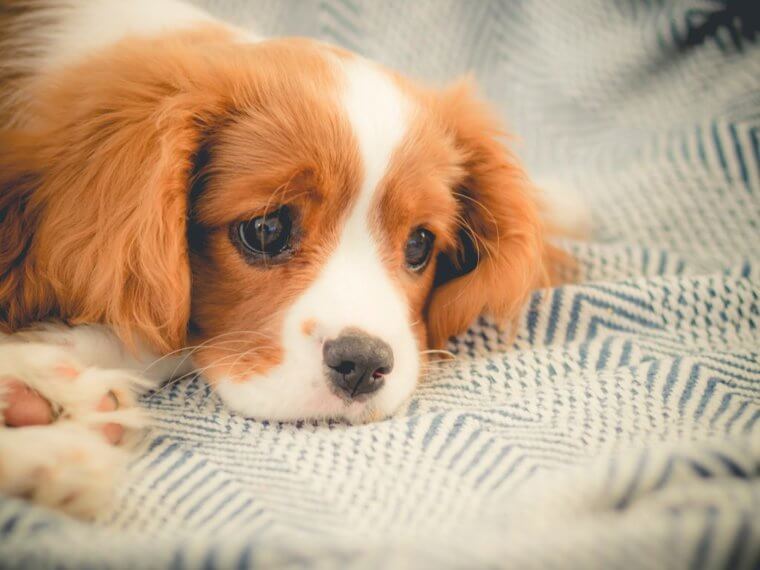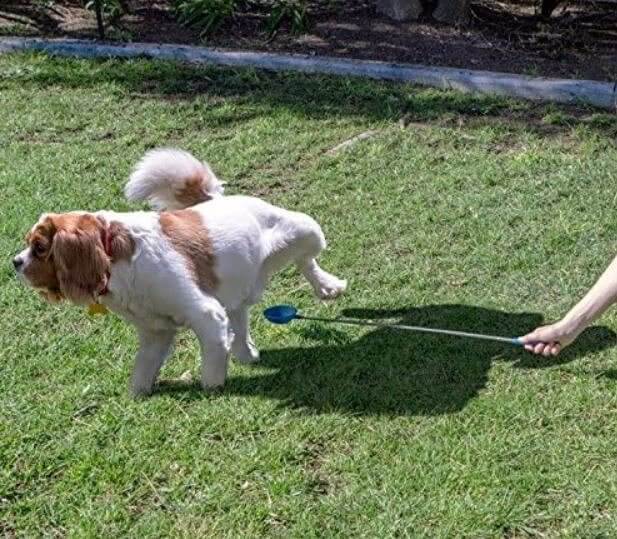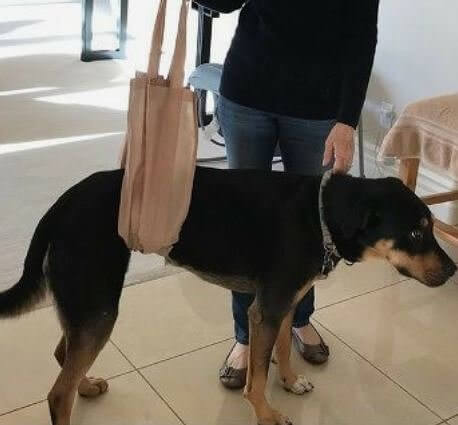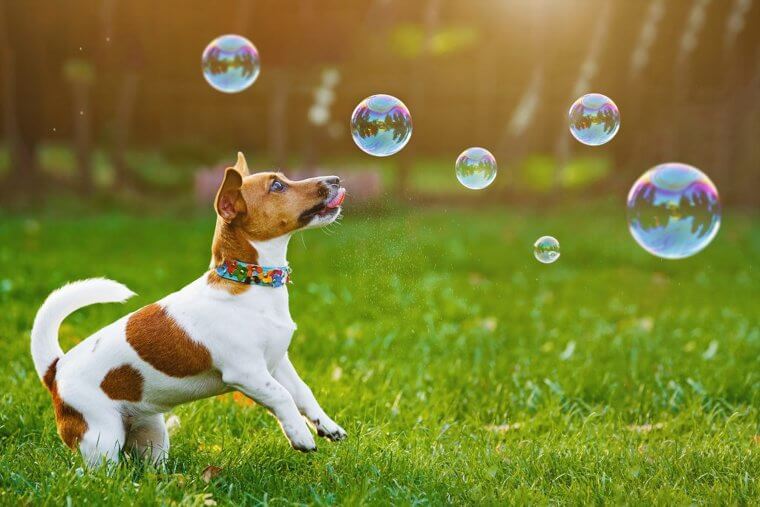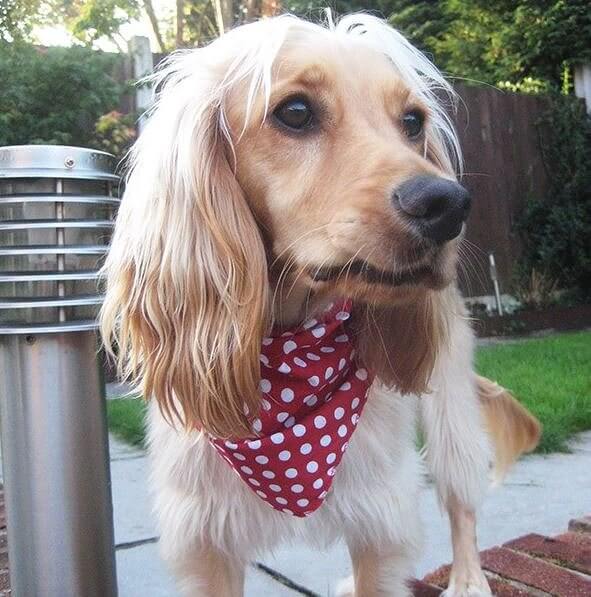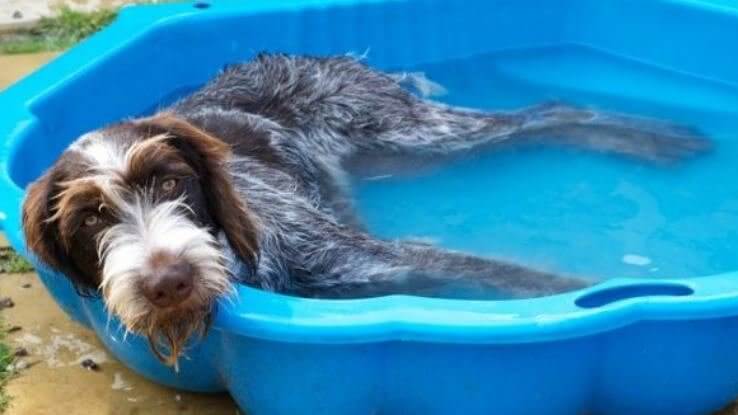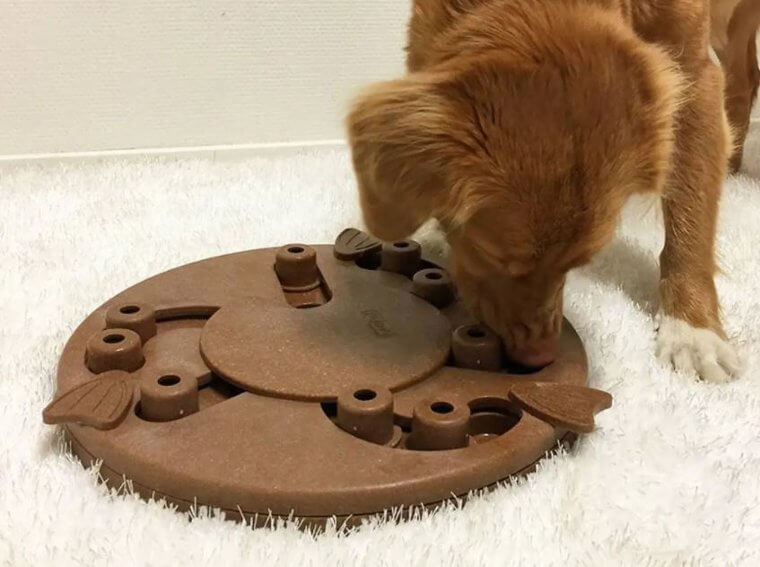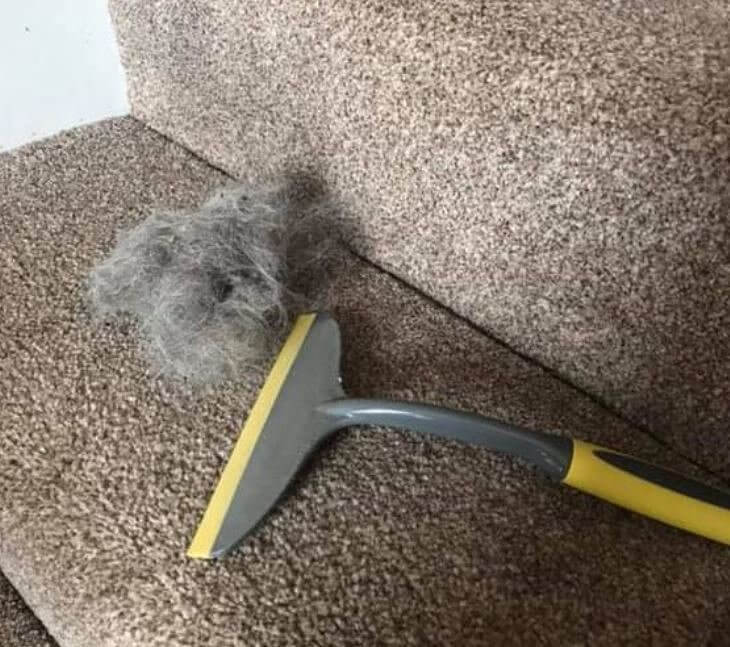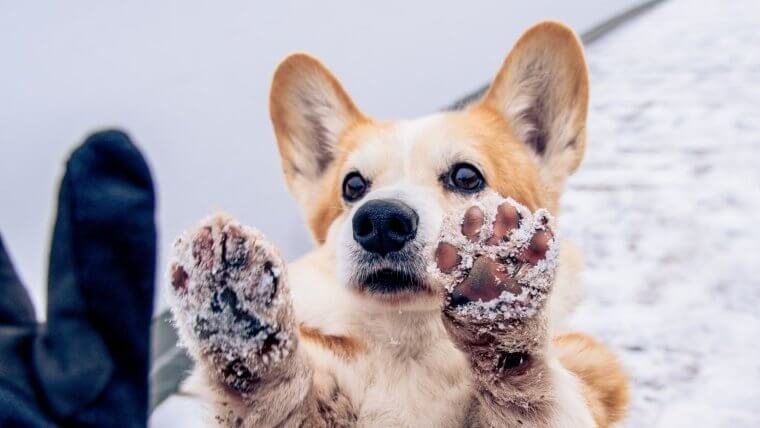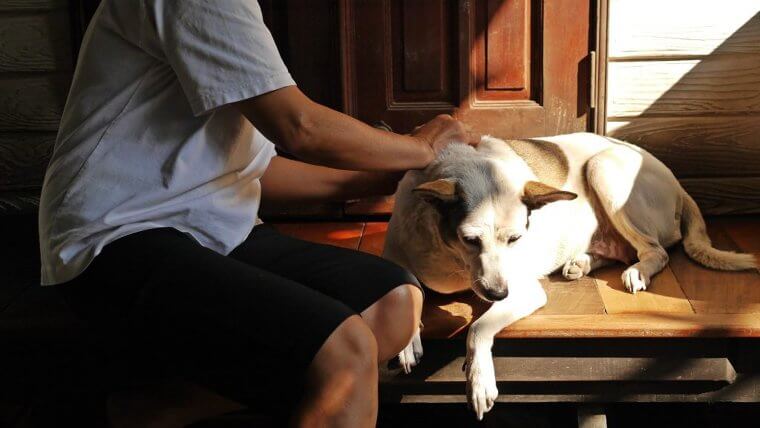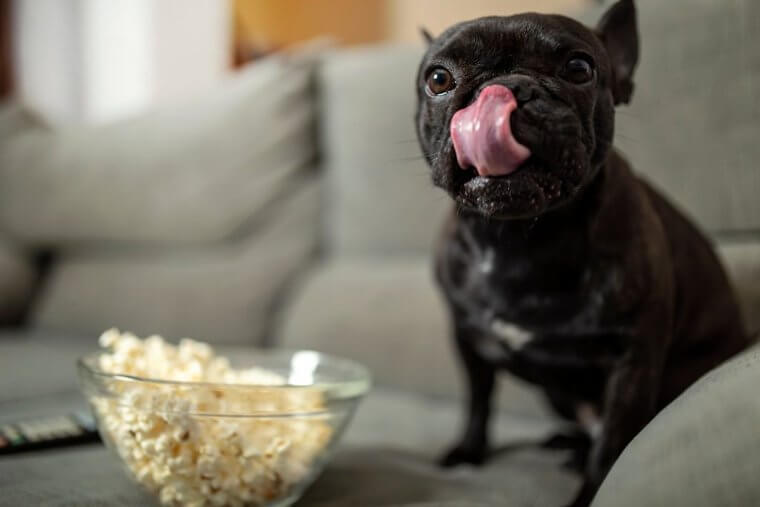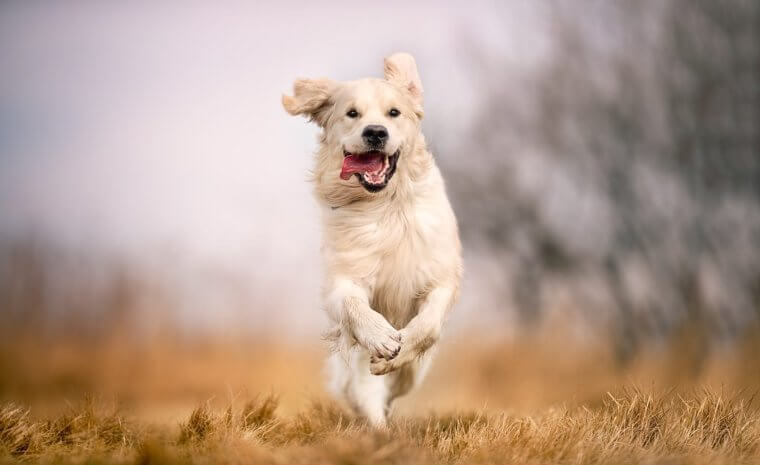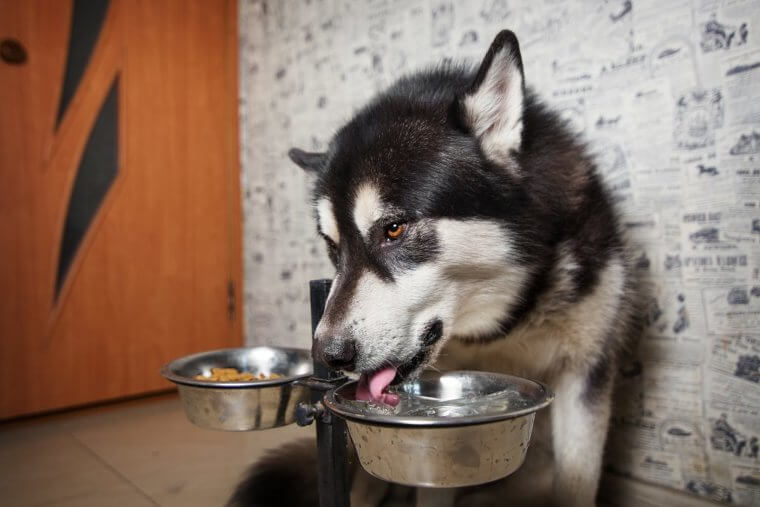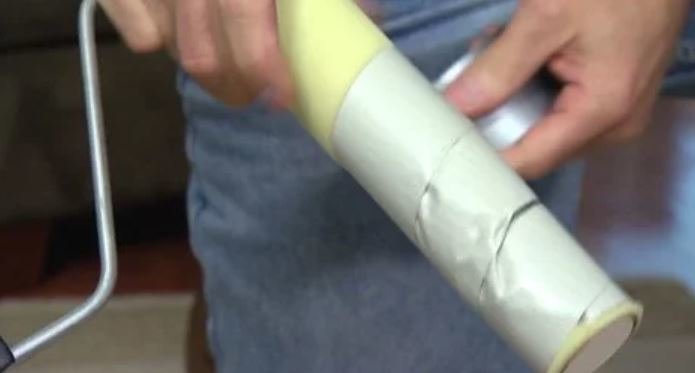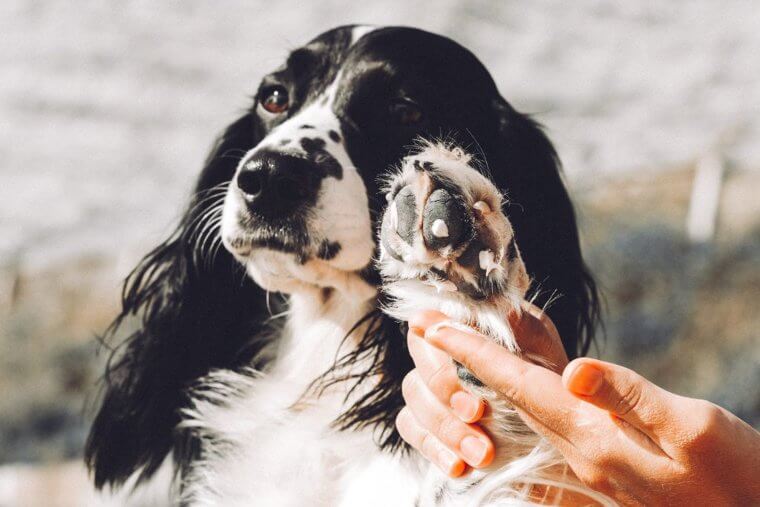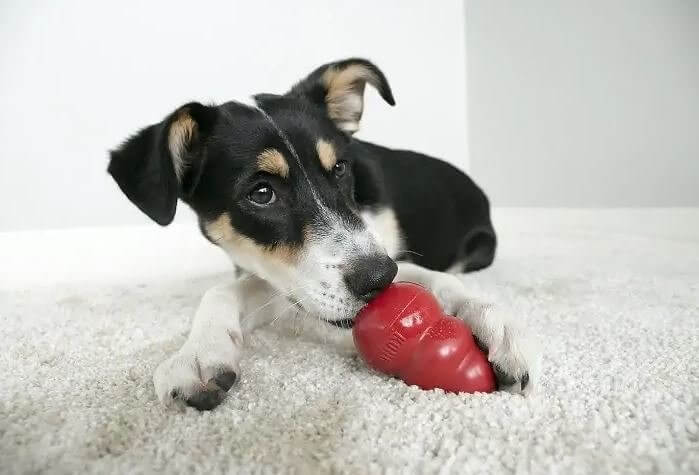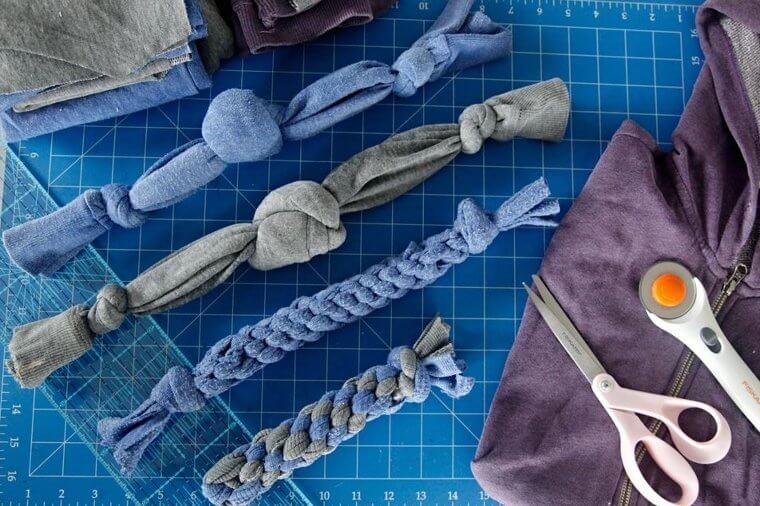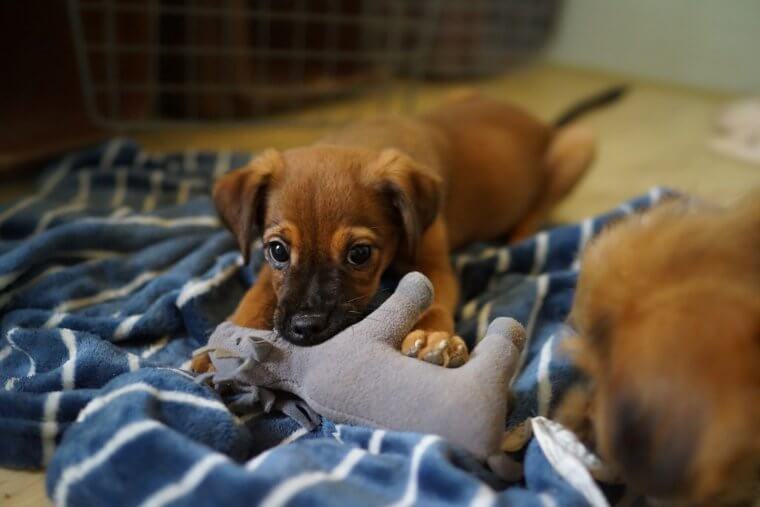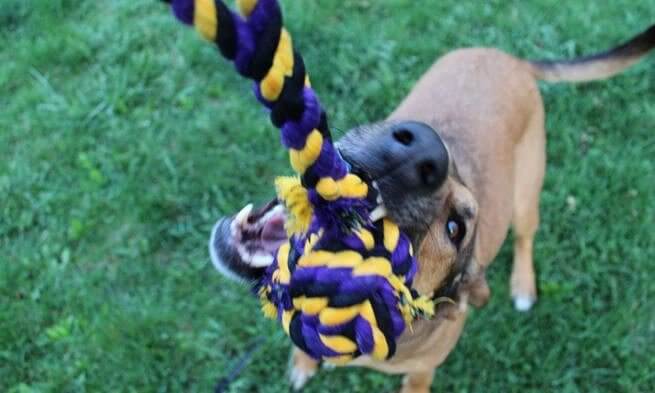How to Finally Get Rid of Urine Stains Once and for All
Puppies take time to housetrain, and even older dogs occasionally have accidents. But there's an easy solution for getting rid of urine stains and preventing your house from smelling like pee. Baking soda is a miracle cleaning material, and you should always keep it in stock if you're a dog owner. After absorbing as much of the urine as possible with a paper towel, evenly spread about a quarter cup of baking soda over the damp area. The baking soda will absorb any lingering stain and smell.
If possible, let the baking soda sit on the stain overnight and then vacuum up or brush off the soda into a dustpan. The trick works best on fresh stains, but it might also be effective on older, dry stains as well.
Storing Kibble in an Open Bag Might Make Your Dog Sick
Many dog owners keep their dog's food in the original, opened bag it came in, which might not be properly resealable. This is an invitation for food hygiene issues, as open food bags can either attract insects or might spoil if the kibble comes in contact with water. But it's easy enough to keep your dog's stomach safe: After opening a bag of dog food, transfer the remaining food into a clean, dry plastic container with a sealable lid.
This might seem like yet another investment you have to make for your pet, but a suitable container can be found for less than $20 online, or you might be able to source one for even less at a pet store.
Hide Your Dog's Medicine in Strong-Smelling Food
While this may seem like a very obvious tip (it's sort of the first lesson in Dog Handling 101), it's surprising how many dog owners either don't think of this or forget about it when they have to give their dog its medicine. Mixing medicine in with food works best when the unpleasant flavor of the medicine can be disguised by flavorful and strong-smelling food, like wet food. This will basically mask the medicine while your dog chews or swallows it.
Unfortunately not all medication can be combined with food. Before trying out this trick check with your dog's veterinarian to ensure that your dog's medication is safe to combine with a meal.
How to Trick Your Dog Into Liking Toothpaste
The mouth is a perfect breeding ground for bacteria, which is why humans are encouraged to clean it thoroughly 2-3 times each day. Maintaining a dog's dental health is equally critical, but unfortunately many dogs are at first put off by the taste of new pet toothpaste. How can you get your dog accustomed to the new taste? Rub some of the toothpaste on the dog's favorite toys a few times prior to brushing its teeth. The contact with the new toothpaste will then feel natural rather than forced, and the dog will be less likely to resist when you try to use it on its teeth.
Always use toothpaste that is specifically designated for pets. Human toothpaste can harm your dog if it is accidentally swallowed, but pet toothpaste is safe for them to digest.
Your Dog Would Love This DIY Dig Pit
Digging is in a dog's DNA. Domesticated dogs' wild ancestors would dig holes in the ground as shelter from harsh temperatures, or to store bones and food. It may be unrealistic to politely ask your dog to ignore its natural impulses and stop digging up your yard or garden, but it's certainly within your powers to redirect a dog's digging impulse into one designated space. Choose a spot in your yard where your dog can dig as much as it wants, outline that spot with bricks or wood panels, and fill it with loose dirt or sand.
You can indicate to the dog that the dig pit is 'theirs' by repeatedly placing its toys in the pit. Eventually the dog will restrict its digging to that one section of your yard, leaving the rest of your yard in one piece.
How to Towel-Test for Fleas
Dogs usually itch themselves with some regularity. But if you notice your dog itching itself repeatedly over the course of a few days, you should probably check to see if it has fleas. Fleas are quite small, and they can be very difficult to spot, particularly if your dog has a thick and/or dark coat. If that's the case, have your dog lay on its side on a white towel while you brush its coat. Fleas that fall off your dog will be easier to spot on a white background.
It's a good idea to check your dog's coat frequently, as the earlier you catch fleas the better. If a flea infestation goes unchecked it can cause serious health problems to your furball, and the longer the fleas go unnoticed the more difficult it is for veterinarians to treat the problem.
Rubber Gloves Are the Ultimate Fur-Collecting Hack
Did your dog jump onto the sofa while your slipcover was in the wash? If you've run out of dryer sheets (see above), another easy way to clean up a mess of dog hair is to use rubber kitchen gloves. Just put the gloves on your hands and rub them over a rug, sofa, or your clothes, 'sweeping' the hair into one pile. In this case static electricity really comes to your rescue.
You might want to keep a set of rubber gloves in the kitchen and then a special set of gloves just for cleaning up your dog's hair. Wash the rubber gloves after every hair cleaning session and then use them again the next time hair accumulates.
The Easiest Way to Remove Dog Hair From Clothes
Snuggling with your dog is one of life's greatest joys. But trying to clean off all the dog hair from your clothes afterward is one of life's most annoying chores. If you forgot to buy a hair roller, don't panic: You probably have some dryer sheets around, right? Just rub the hair off your clothes with the sheets and voila! No hair roller necessary. The same technique can be applied to basically any other surface in your home.
You might be tempted to rub your dog down with the dryer sheet in an attempt to absorb your dog's loose hairs, but you'll want to avoid that. The dryer sheets have chemicals that could be left behind on your dog and ingested when the dog licks its coat.
Is a Chest Leash/Harness Really All That Better?
While traditional neck leashes/collars are a very convenient way to control your dog when you're out on a walk, they can actually be quite unhealthy for certain flat-faced breeds of dogs (like bulldogs, for instance), for whom a neck leash might cause breathing problems. Consider using a chest leash or harness instead, which might allow you to control your dog more easily while simultaneously putting less pressure on its neck.
Chest leashes and harnesses do have some cons—for instance, they take longer to put on than a collar. And some dogs might actually prefer the feel of a collar to a chest leash. Try both options out with your dog at a pet store before making a decision.
How to Remove Drool Stains With Basic Cleaning Products
Urinating isn't the only way a dog might leave its mark on your furniture; drool can cause stains too. Fortunately you can use multi-purpose, natural cleaning products that you probably already have on hand to get rid of the stains. Just combine a quarter cup of white vinegar with a cup of cold water in a bowl, then add a teaspoon each of dish soap and baking soda. Mix the solution together, then pour it into a spray bottle and spray it onto washable surfaces where the dog drooled.
After you spray the solution let it sit for about 10 to 15 minutes. If you don't have a spray bottle at home you can also apply the solution to a white cloth and rub it onto the affected area.
Dog Scratches on the Wooden Table? There's a Solution
Wood furniture can add wonderful texture and color to your home. But your dog might easily mistake your pricey wood table's legs for fun scratching posts, which can quickly destroy the wood's aesthetic value. Fortunately, there's a surprising home remedy for removing light claw marks from wood: walnuts. Rub raw walnuts over light wood scratches and let the healing walnut oil work its magic. After several passes with the nut, rub the oil in gently with your fingers, then finish by rubbing it with a soft cloth. Most scratches should disappear with this trick.
Just remember: This trick works well for light scratches, but it won't be as effective for heavy gashes in the wood (which your dog's claws are unlikely to cause anyway).
Muffin Trays for Endless Entertainment
One great thing about dogs is that they're rather easily entertained, so you don't necessarily need to buy sophisticated new dog toys all the time from the pet store. You can instead keep your dog occupied using stuff you've already got at home. One great example is a muffin tray. Fill the tray's holes with tennis balls and other small objects, and set the tray on the ground. Your dog will enjoy emptying the holes of the toys and filling them back up.
Just remember to thoroughly wash the muffin tray after every play session. You may want to use the tray again one day for its original intended purpose of baking, and you don't want dog-flavored muffins.
Your Dog Would Love This DIY Toy
A flirt pole—basically a long stick with rope and a toy attached to it—is an absolute must for any dog owner. Letting your dog chase the 'lure' attached to the end plays into your dog's inherent hunting instincts and it's a great way to exercise your dog within a small space. But why buy one when they're so easy to make at home? Start by cutting a PVC pipe down to about four feet. Then feed a long piece of thin rope into the pipe and tie a strong knot at one end of the rope sticking out.
Tie a simple dog toy (like braided, repurposed clothes) onto the end of the rope and voila! You have your own, inexpensive flirt pole for your dog to chase around until they tire out.
Homemade Doggy Ice Pops Are the Best Summer Treat
Just as humans love to cool off in the summer with a popsicle or ice cream, dogs love the refreshing sensation of tasting cold food as well. To make them at home, you just have to blend together dog-safe fruit, like bananas and strawberries, with water. Pour the blend into popsicle molds and put the molds in the freezer for half an hour. Remove the molds and add a dog biscuit to serve as the edible popsicle stick. Return the molds to the freezer until they're frozen all the way through, which should take about six hours.
Greek yogurt is actually quite healthy for dogs' stomachs, so you can replace some of the water with a tablespoon (for small dogs) or two tablespoons (for bigger dogs) of Greek yogurt to give your ice pops extra nutritional value.
What to Do if Your Dog Gets Stung by a Bee
Dogs are adorably curious creatures, and they love playing outside. But this combination can occasionally get them into trouble if they play too close to bees. In the event that your dog is stung by a bee or wasp, start by removing the stinger with some tweezers. Then mix up a simple paste of baking soda and water and apply it to the stung area. This should help neutralize bee venom and reduce the pain and swelling caused by the sting.
Just remember to routinely check on your dog after a sting. If the swelling keeps increasing after a few minutes, or if the dog was stung on the head, mouth, or nose and they're having trouble breathing, take it to the veterinarian.
Diversify Your Dog's Diet With Fruits and Veggies
Like people, dogs are omnivores (meaning they eat both plants and animals), and they enjoy a bit of variety in their cuisine. So why not give them a nutritious treat every now and then? Sliced apples are packed with vitamins and fiber, and serving them to your dog frozen can be a refreshing summer snack. Your dog will probably also love a small amount of banana and cucumber from time to time, and these low-calorie treats are particularly good for overweight dogs.
Some types of 'people food' are perfectly safe and healthy for your dog to eat, but not all, including certain fruits and veggies. Check with your vet before giving your dog a fruit or vegetable they haven't eaten previously.
Invest in a Good Slipcover
Some dogs shed a lot more than others (every owner of an Alaskan malamute just collectively groaned). But virtually all dogs do shed their hair to some degree, which can quickly turn your couch into a royal mess. Buying a simple slipcover for your sofa is the perfect solution, and maintenance is super simple: Whenever the slipcover gets to be a mess of dog hair (which could happen in a matter of days or weeks depending on the dog), take it off the couch and shake it off outside, and/or run it through the washing machine if necessary.
After all, buying a slipcover for your sofa is a lot cheaper and less hassle than, say, trading in your dog for a different breed that doesn't shed as much. Kidding, kidding!
Make Your Own Dog Bed
Making your own dog bed is surprisingly easy and certainly can help you save money. And if you've ever wanted to experiment with sewing, this is a low-risk project to finally get crafty and try it out. Take an old, comfy sweater that you no longer need, then stuff it with inexpensive wadding or cotton filling fibers (which you can get from a local craft shop). Once the sweater is properly stuffed, sew together the neck and sleeves to prevent the filling from falling out.
Aside from being cost-effective, these DIY dog beds are also environmentally friendly, as they repurpose old clothes you might otherwise throw away. It's a win-win.
Prevent Clogged Drains
Bathing your dog now and then is a must; but keeping your pipes free of dog hair is also a must. How can you keep both your dog and your pipes clean? Place a baby wipe over your bathtub's drain, then push the stopper in on top of the baby wipe. Fill the tub with water as you normally would for bathtime and bathe your dog. Hold the wipe down flat while you pull out the stopper. The water will then pass through the wipe as the wipe filters most of the dog hair.
Keep in mind that for hairier dogs you might need to manually clear the hair off the wipe once or twice as the water is draining.
Ease Into Brushing Teeth
Many dogs are resistant to having their teeth brushed, particularly if it's their first time. But aside from gradually getting the dog accustomed to the taste of toothpaste, there are other key preliminary steps that dog owners can take to get their dog in the right zone for a brushing session. Start by gently massaging the dog's cheeks (outside the gum area) to make it comfortable. Then, instead of going straight for a toothbrush, wrap some medical gauze around your index finger and start scrubbing the gums and teeth with that.
After repeating that sequence a few times your dog will be more comfortable with their mouth being touched, and it will be time to graduate to the real thing: brushing their teeth with a dog-designed toothbrush and toothpaste.
Fix Some Quick Stew
Dogs love a bit of comfort food just like people do. And while your dog probably already loves the taste of the dry food you give it, you can liven up the kibble a bit by pouring warm water over it before you serve. The water thickens the food and makes it more filling for your pet, and warm water will release the food's aromas, turning a basic meal into a 4-star culinary experience.
Just remember that you should only serve this treat periodically, as dry food is good for a dog's teeth. And you don't want to leave the mix of warm water with the food sitting out for too long, as the food might spoil.
Use Essential Oils
Veterinarians generally recommend that you should bathe an adult dog every four weeks to help keep their skin and coat healthy and clean. But an unpleasant dog smell can really start to cling to your furniture (couch, bed, etc.) after a period of one month. To keep your house smelling fresh in between dog baths, mix a cup of baking soda with around 15 drops of lavender oil. Then sprinkle the baking soda on your sofas, beds, carpets, etc. Let it sit overnight and vacuum it up in the morning.
If lavender isn't your favorite scent, you might be able to use other essential oils in its place. Just check with your vet to ensure your preferred essential oil is safe for dog before you start applying it in your home.
Take Urine Samples From a Distance
Let's be honest: It's a little awkward and uncomfortable when we, as humans, have to provide a urine sample to our physicians. But it's nonetheless a critical way for doctors to see what's going on with our bodies, and the same logic applies to monitoring your dog's health too. But good luck getting your dog to sit still, aim, and urinate into a cup! Fortunately there's a rather simple, long-handled spoon that can help you collect urine from your dog.
The long stem of the spoon allows you to casually place the device under your dog as they are about to urinate, and it can be done from a far off enough distance that it won't make your dog skittish.
Turn a Grocery Bag Into a Walking Sling
Degenerative diseases, or simply aging, might cause a dog's hind legs to be unsteady, making it difficult for them to walk. But just as a person can use a cane to assist them with mobility, simple devices can help disabled dogs get back on the move as well. You can make a walking sling to help lift up the weight that puts pressure on a dog's hind legs. You just need to cut the sides of a cloth grocery bag, and then wrap the bottom under your dog's stomach.
You can support your dog's weight by holding the handles of the grocery bag/sling while the two of you go for walks.
Play With Homemade Bubbles
Dogs love chasing bubbles the same way children do. But you don't have to waste money on a bubble maker from a toy store. Just use scissors to poke a small hole through the bottom of a plastic cup, and insert a plastic straw through the hole. Create the bubble solution in a bowl by slowly mixing three cups of water with half a cup of dishwashing soap. Then dip the mouth of the plastic cup into the bubble solution and blow into the straw to form the bubbles.
This is a perfect activity for parents with both young children and a dog. Kids will have fun creating the bubble maker and blowing the bubbles and the dog will enjoy trying to chase the bubbles down! Just make sure your dog doesn't eat them, as the soap in the solution can cause diarrhea.
Rock the Right Bandana
A bandana will not only give your dog a stylish appearance, but it will more importantly improve the dog's visibility, which is critical to its safety in public areas. A brightly colored or reflective bandana will make the dog more visible to drivers at night, and can also help you keep your eye on your dog when it might be playing in a crowd of other canines at the dog park.
Want to keep your dog cool when you go for walks on a hot day? Soak the bandana in cold water before putting it on your dog's neck.
Reuse the Kids Pool
If you have grown kids, there's a really good chance you have an inflatable kids pool collecting dust somewhere in your garage. Why not dust it off, fill it up with water, and surprise your dog with its own new pool? Come summertime your dog will probably love a relaxing dip in the water on hot days, particularly if it's one of the longer-haired breeds, which can really suffer when temperatures rise.
This hack is particularly essential for those who live far away from natural bodies of water that your dog can cool off in (lakes, rivers, etc.) So bring a mini-lake to your backyard!
Try Out Dog Puzzles
While there are many interactive ways for you to entertain your dog (like playing fetch), every dog owner has stretches of time where they need to concentrate on other priorities, like kids or work. To keep your dog entertained on its own you can use a dog puzzle, in which treats can be hidden underneath different covers that the dog must remove with its paws, nose, teeth, or some combination of the above. These puzzles often come in different levels of difficulty, and they're a great way to both physically and mentally stimulate your dog.
A cheaper alternative to buying a puzzle toy for your dog is to simply turn treat time into a challenging activity by hiding the treats throughout your house or in your yard. Your dog will have fun searching high and low for the food it loves.
Gather Hair With a Squeegee
Usually the fastest way to remove dog hair from upholstery is to vacuum it up. But what if you don't have a vacuum, or your vacuum is busted? A quick alternative is to use a squeegee—the tool with a flat rubber blade you use to gather liquid when cleaning a window or a shower floor. Just clean the squeegee and let it dry for a minute, then use it to gather your dog's hair into clumps.
Once you've 'squeeged' the hair into several piles you can just put on a pair of gloves, pick up the clumps, and dispose of them in the trash. No vacuum necessary!
DIY Dog Manicure
Overgrown nails can make walking uncomfortable for dogs, and also run the risk of being accidentally torn off while a dog is playing, which may require expensive veterinary care. While a doggy manicure usually isn't too expensive, it's a grooming procedure that most patient dog owners can handle at home, and doing it yourself will save you quite a bit of money over your dog's lifetime. Investing in a good nail grinder (trimmer) kit will cost around $25-$60, while paying a groomer to trim your dog's nails will cost around $15-$20 each time.
It's easier to get your dog into the habit of relaxing for a manicure if you start trimming their nails while they're still young. Eventually they'll become so accustomed to the process that they'll barely fidget when they're older.
Be on the Watch for Ticks
Dogs that spend a significant amount of time outdoors may be particularly prone to tick bites, which can give your dog joint problems, in addition to other health concerns. You should periodically check your dog for ticks by running your hands through the dog's coat, ears, toes, face, and neck (basically all over its body) to feel for bumps. If a tick has attached itself to your dog's skin, put on medical gloves and disinfect a pair of tweezers. Pull the tick out with the tweezers, drop it into a small bowl of rubbing alcohol, and then disinfect your dog's wound.
This may sound odd, but it's a good idea to save the tick for a few days in the event that your dog has mobility issues, appears unusually tired, or loses its appetite. Then you can bring the tick to a veterinarian to be tested for diseases it may have passed onto your dog.
Use Popcorn to Teach the Game of Fetch
You'd think that catch and fetch is an intuitive game that all dogs will understand from the get go. But for some it takes a little training, and your dog might not grasp the concept at first. To get the dog into the habit of running after everything you throw at it, start with something tasty that it definitely wants to go after, like popcorn. Then you can eventually graduate to catching and retrieving balls and other dog toys.
Just make sure the popcorn you throw for your dog is plain popcorn, rather than buttered, seasoned or sweet popcorn, which isn't healthy for dogs to eat.
Try the Reward Method
Positive reinforcement is a great way to encourage your dog to behave properly, and repeatedly rewarding it with treats when it obeys your commands will gradually enforce a healthy amount of discipline. For your dog's safety (and your sanity), it's absolutely essential that your dog learns to immediately come to you when you call out its name. When teaching the dog to do this give it a favorite treat for the first 5-10 times that it responds to its name being called.
Your dog will gradually become so accustomed to responding to your voice that it will eventually do so without the expectation of getting a treat in return.
Elevate Food and Water Bowls
While most dog owners simply place feeding bowls on the ground, there are a few benefits to raising them up into the air a bit. An elevated bowl will be closer to your dog's mouth, which potentially puts less strain on their neck and/or leg joints when they eat. This is especially important for bigger dogs and older dogs that have mobility limitations. Dishes that are secured while elevated can also minimize the amount of mess a dog might cause by pushing their bowl around on the floor.
You can elect to either invest in a specially-designed, elevated feeding bowl stand, or you can simply raise the height of your bowls by placing them on boxes you don't need.
Make Your Own Dog Hair Remover
While it's widely known that duct tape can be used for hundreds of different purposes, most might not think of it as a cleaning tool. But it certainly can be if you're a dog owner. If your dog leaves hair all around your house, try cleaning it up by wrapping duct tape around a rolling pin, sticky side up, and then rolling it onto your furniture to pick up the hair. If you don't have a rolling pin at home you can simply wrap the tape around your hands instead.
Why waste money on lint rollers when there are so many ways to easily clean up dog hair using products you already have? Combine this with the dryer sheet method, rubber gloves, and a slipcover and cleaning up your dog's hair will be a breeze every time.
Moisturize Paw Pads
Just as properly moisturizing can prevent human skin from cracking, peeling, or becoming too dry, applying moisturizer to your dog's paw pads can keep them healthy and itch free. Because a dog might lick its paws, be sure not to use human lotions or moisturizers, and stick with products made specifically for canines, or natural non-toxic remedies, like shea butter. No matter what you use to moisturize a dog's paw pads, always make sure the lotion is thoroughly rubbed into the skin.
Only moisturize a dog's paw pads when necessary, for instance, when they're cracked. If your dog already has soft pads, moisturizing them might actually make the pads too soft and overly sensitive to walking on rough surfaces.
Fill a Toy With Treats
While there are plenty of do-it-yourself dog toys that you can make from reusable items you already have around the house, there are some manufactured dog toys that are so effective and entertaining for furry friends that you should probably just give in and buy them. The Kong is perhaps the most widely used dog toy in the world, and its popularity can partially be explained by the fact that you can fill up the toy with food. Dogs will spend hours trying to chew at the toy to get to what's inside.
Kongs are inexpensive, and although they're generally very durable, there are different models designed for dogs of different ages and bite strength.
Repurpose Old Clothes Into Dog Toys
Dog owners should never throw away old shirts, hoodies, or sweaters, as these fabrics can easily be reworked into perfectly good dog toys. Start by cutting the fabrics into a series of long strips, then braid the fabrics together and tie the ends into knots. The end result can be just as effective as buying similar ropes and toys from the pet store, and it's a more environmentally friendly approach.
Those who enjoy sewing might be tempted to create toys from old clothes by filling them with cotton stuffing and sewing them up, but this can lead to a huge mess when the dog rips the new toys apart.
Bring Back Your Kids' Stuffed Animals
Kids eventually lose interest in stuffed animals as they mature, leaving many parents with a box of textile toys collecting dust. The best course of action is to donate the stuffed animals to children's hospitals or nonprofits that work with low-income families. But another alternative is to give the stuffed animal to your dog as a new toy. The younger the dog, the more likely they are to grow attached to the cuddly toy. Some dogs remain protective of the stuffed animals they were given as puppies well into their adulthood.
If your dog outgrows the stuffed animal you can always donate it to an animal shelter where less fortunate dogs will have something to play with (if, of course, the stuffed animal survived your dog's teeth).
Play a Round of Tug of War
Ever feel like you've run out of ideas for games to play with your dog? You might be surprised by how many activities you actually have at your disposal to keep your critter occupied. For instance, remember when you were a kid and your gym teacher would divide your class into two sides for a game of tug of war? You can apply the same basic concept to your dog, whose hunting instincts are naturally suited to gripping something with its teeth and pulling.
This is a particularly great option for dog owners in urban areas who don't have a lot of (or any) yard space. Tug of war can even be played within your own living room, depending on how big your dog is.

